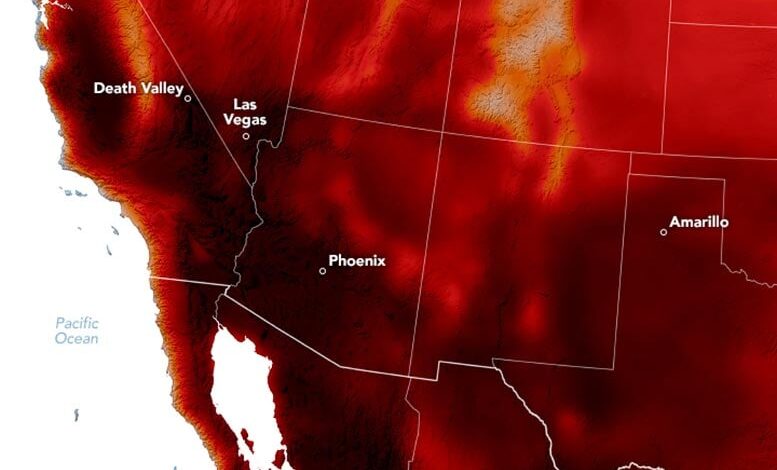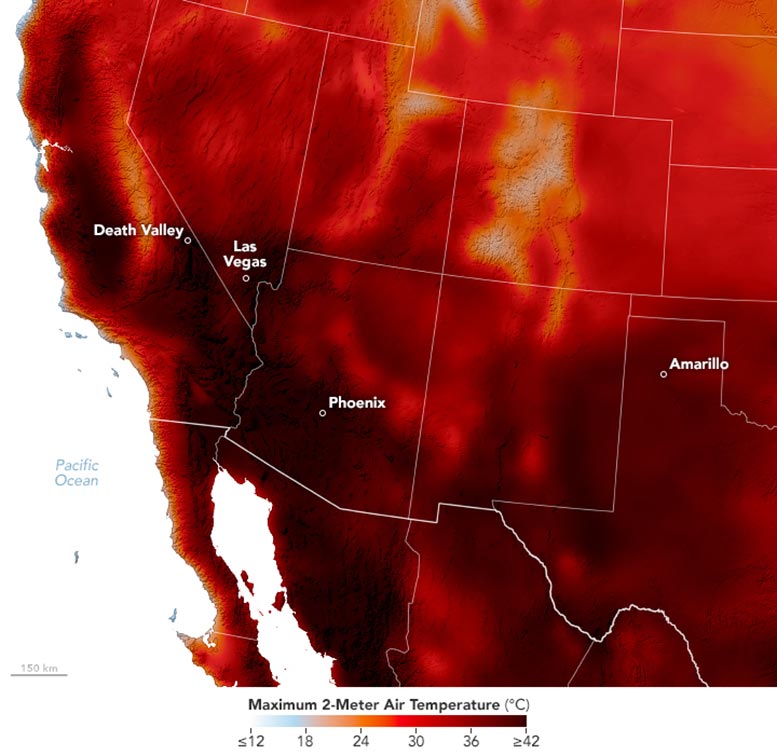Scorching Reality: Southwest’s Record-Shattering June Heat

An early summer heat wave broke temperature records in Nevada, Arizona, and California in June 2024.
June 2024 saw a severe heat wave in the Southwest, with record temperatures in places like Las Vegas and Phoenix. NASA’s studies show a trend of more frequent heat waves in the U.S., doubling from the 1980s to 2023.
Early Summer Heat Wave Hits the Southwest
In June 2024, an early summer heat wave delivered extraordinary heat to the Southwest. Record-breaking high temperatures were observed on June 6 and 7 across multiple communities in Nevada, Arizona, and California.
This heat event originated from a heat dome that enveloped Mexico throughout most of May, breaking numerous heat records there. By the onset of meteorological summer in early June, these intense temperatures had extended northward into the U.S., coinciding with the formation of a low-pressure blocking system in the Pacific Ocean.
Visualizing the Heat: June 2024 Temperature Map
The map above shows air temperatures across the U.S. Southwest and northern Mexico on June 6, 2024. The map was produced by combining observations from satellites and other sources with temperatures predicted by a version of the GEOS (Goddard Earth Observing System) model, which uses mathematical equations to represent physical processes in the atmosphere. The darkest reds indicate temperatures of more than 108 degrees Fahrenheit (42 degrees Celsius) at about 6.5 feet (2 meters) above the ground.
Record-Breaking Heat in Major Cities
Temperatures in Las Vegas, Nevada, hit 111°F on June 6, one degree above the previous record for that date, according to the National Weather Service. That same day, temperatures soared to 112°F in Phoenix, Arizona, and 122°F in Death Valley, California. The Washington Post reported additional locations that either broke or tied temperature records that day, including Fresno, California; Amarillo, Texas; Kanab, Utah; Reno, Nevada; and Flagstaff, Arizona.
Rising Frequency of Heat Waves
Heat waves like this one have become more frequent in the United States in recent decades, according to a team of researchers at NASA’s Goddard Space Flight Center. Using a NASA modeling system called MERRA-2 (Modern-Era Retrospective analysis for Research and Applications-2) to analyze long-term trends, the researchers found that summer heat waves in the U.S. roughly doubled in number between 1980 and 2023, increasing from an average of two to four per month.
NASA Earth Observatory image by Michala Garrison, using GEOS data from the Global Modeling and Assimilation Office at NASA GSFC.



